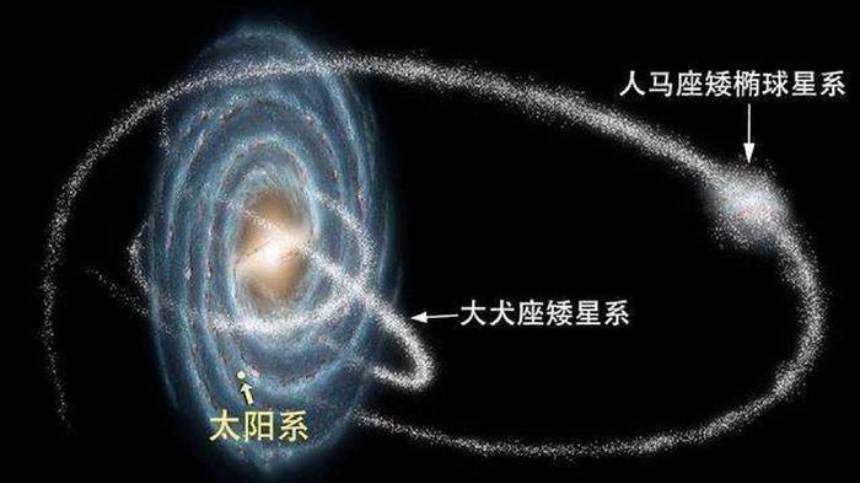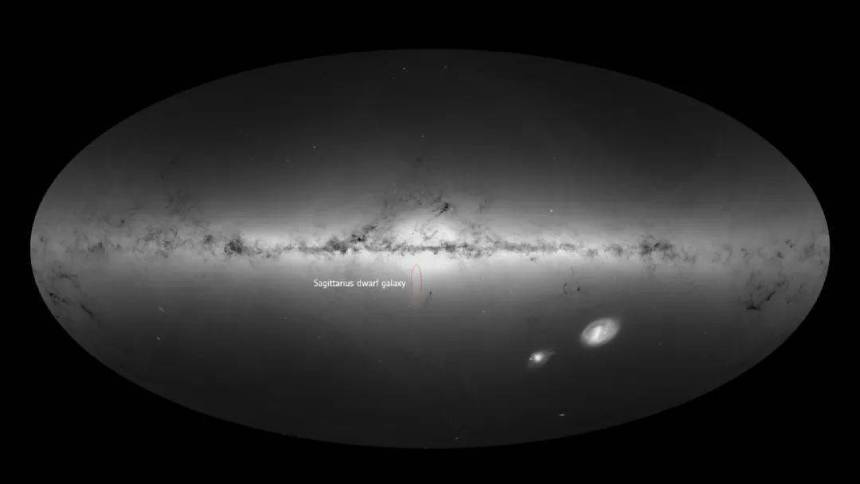More than two hundred years ago, William Herschel, the discoverer of Uranus, first tried to draw a map of the Milky Way by scientific means, but limited observation equipment limited his performance, and the results of the drawing were in and out of the Milky Way we observe now larger. At present, scientists generally believe that the Milky Way is a spiral galaxy, but this is only a rough drawing. In order to have a comprehensive understanding of the Milky Way, the European Space Agency (ESA) launched the Gaia satellite in 2013. Through the data sent back by the Gaia satellite in recent years, scientists have discovered the changes of the Milky Way over billions of years, as well as the collision events that will occur in the future.
Recently, some scholars from Lund University in Sweden discovered in the “Gaia” star database that a large part of the stars in the periphery of the Milky Way’s galactic disk seem to be disturbed by some unknown force and are “trembling”. The researchers analyzed the motion characteristics of the stars in different parts of the galactic disk, and found that many stars have relative velocities in the direction perpendicular to the plane of the galactic disk. Overall, they are causing a large part of the outer periphery of the galactic disk to undulate like waves, like a pool of water. Like ripples on the surface. The researchers believe that part of the galactic disk “vibrates” because a “giant” passed by the Milky Way at close range, and its gravitational disturbance disturbed the outer galactic disk.
According to the star motion parameters provided by “Gaia”, the researchers deduced the characteristics and flight trajectory of this “giant”, thinking that it may be a small galaxy near the constellation Sagittarius discovered by astronomers in the last century-the Sagittarius dwarf star Tie. The Sagittarius dwarf galaxy is in the process of disintegrating today, but the situation was different 1 to 2 billion years ago, when it was much larger, and its mass may be equivalent to 20% of the mass of the Milky Way’s galactic disk. Even though it was far less massive than the Milky Way, it still caused tremors at the edge of the Milky Way. Scientists believe that this is caused by the Sagittarius dwarf galaxy repeatedly crossing the edge of the Milky Way. In the past 6 billion years, the Milky Way and the Sagittarius dwarf galaxy have collided three times.

We all know that the Milky Way, which contains hundreds of billions of stars, has been born for 13.6 billion years. At first, it was just a cloud of gas mainly composed of hydrogen and helium. Later, stars were gradually bred, and by continuously annexing other galaxies grow up. The approach of the Sagittarius dwarf galaxy to the Milky Way is a kind of tragic moth to the flame, but in fact such galaxy mergers are common in the universe. As early as 8 to 10 billion years ago, a sausage galaxy named Gaia-Enceladus also crashed into the Milky Way. Its mass was much larger than that of the later Sagittarius dwarf galaxy, and it finally merged with the Milky Way.
